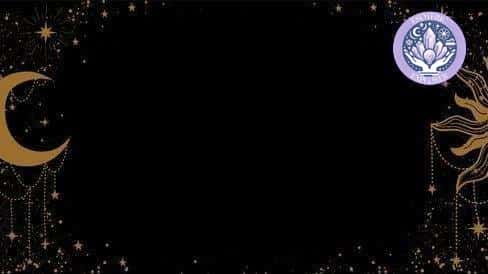Today, we want to explore the fascinating world of tarot card divisions . Tarot cards have been used for centuries as a tool for divination, self-reflection, and guidance. In this article, we will delve into the Major Arcana , the journey of The Fool, and the major themes and archetypes that they represent.
We will also unveil the Minor Arcana , including the meanings of the four suits – Wands, Cups, Swords, and Pentacles. Understanding the combinations of Major and Minor Arcana in readings can provide valuable insights and guidance. Whether you are a tarot enthusiast or someone curious about the mystical world of divination, this article will provide valuable insights and knowledge.
Stay tuned to discover how you can integrate tarot card divisions into your practice and gain a deeper understanding of the cards’ meanings. Let’s embark on this enlightening journey together.
The most important information briefly summarized
- The text introduces the fascinating world of tarot card divisions, exploring the Major Arcana, the journey of The Fool, and the major themes and archetypes they represent. It also unveils the Minor Arcana, including the meanings of the four suits – Wands, Cups, Swords, and Pentacles.
- The journey of The Fool symbolizes self-discovery and growth, mirroring life’s stages and lessons. It encourages embracing change, taking risks, and trusting the unknown, offering deeper insights into personal paths and opportunities.
- Interpreting tarot cards in context and integrating them into practice can provide a deeper understanding and insight into readings, bringing mindfulness and intuition to the practice.

1/6 Introduction to Tarot Card Divisions
The history of tarot cards dates back centuries and their intricate imagery and symbolism hold significant meaning in tarot readings. The Fool’s journey is particularly intriguing and carries profound significance in the world of tarot. As we explore the world of tarot card divisions , we will uncover the captivating history, intricate symbolism of the Major Arcana, and the profound significance of the Fool’s journey.
So, grab your deck of tarot cards and get ready to embark on a journey of discovery and insight.
2/6 Exploring the Major Arcana
The Journey of The Fool
The Tarot’s Fool’s journey is a captivating exploration of self-discovery and growth, mirroring life’s stages and lessons. Each step offers valuable insights and guidance, symbolizing the beginning of a new venture, innocence, and the courage to take a leap of faith. As challenges arise, it reflects the ups and downs of life, serving as a powerful tool for understanding personal development and the cyclical nature of life.
Embracing change , taking risks, and trusting the unknown are encouraged, offering deeper insights into our own paths and the opportunities that lie ahead.
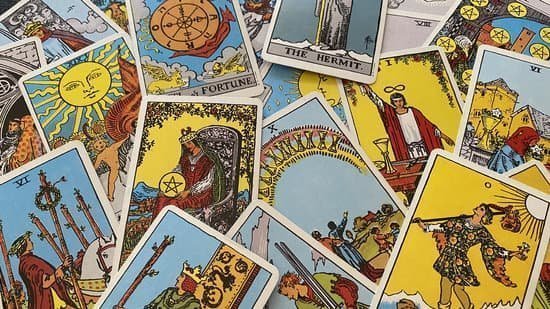
Meaningful Tarot Card Symbolism Tabelle
| Card Name | Description | Symbolism | Reversed Meaning |
|---|---|---|---|
| The Fool | The Fool represents taking a leap of faith, embracing uncertainty, and seeking new opportunities. | The Fool is often depicted with a small bag indicating the journey ahead, and a white rose symbolizing purity and openness to new experiences. | Reversed, The Fool can signify being reckless, making impulsive decisions, and ignoring potential consequences. |
| Three of Cups | The Three of Cups represents social gatherings, joyous occasions, and close friendships. | Three people raising their cups in a toast symbolize celebrating achievements, fostering strong connections, and enjoying life’s pleasures. | Reversed, The Three of Cups may indicate conflicts within a social group, feeling left out, or strained relationships. |
| The Emperor | The Emperor represents leadership, organization, and taking control of situations. | The Emperor is often depicted on a throne, holding a scepter and orb, symbolizing authority, structure, and strategic decision-making. | Reversed, The Emperor may represent abuse of power, micromanagement, or a lack of direction. |
| Ten of Swords | The Ten of Swords represents betrayal, painful endings, and feeling overwhelmed. | A figure lying face down with ten swords in their back symbolizes experiencing a devastating loss, reaching a breaking point, and feeling defeated. | Reversed, The Ten of Swords may indicate gradual recovery, healing from past wounds, and finding the strength to move forward. |
Major Themes and Archetypes
Tarot card readings use archetypes to understand the Major Arcana. These symbols represent our desires and fears, providing guidance . Each archetype holds significant meaning, such as the High Priestess or Death .
Exploring these themes offers valuable insights into ourselves and the world.
Interested in learning more about reversed tarot cards? Check out our article on reversed tarot cards and discover the meaning and interpretation behind them.
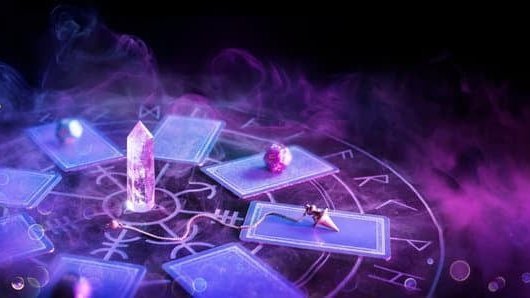
3/6 Unveiling the Minor Arcana
The Four Suits and Their Meanings
The Wands in tarot signify creativity , energy, and passion . Cups represent emotions, relationships , and intuition. Swords stand for intellect , communication, and conflict .
Each suit has its own symbolism and significance in tarot readings, helping you interpret the cards more effectively.
The Suit of Wands: Creativity and Action
The Suit of Wands in tarot represents creativity and action, inspiring new ideas and projects. Embrace your creative spirit and pursue your goals with passion and enthusiasm. Harness your inner fire and drive towards your ambitions.
If you’re inspired to start something new or take the next step in a project, the Suit of Wands is there to support and guide you.
Curious to learn more about the meanings of the Suit of Cups in tarot? Check out our article “Suit of Cups Tarot” to gain a deeper understanding of this intriguing tarot suit.
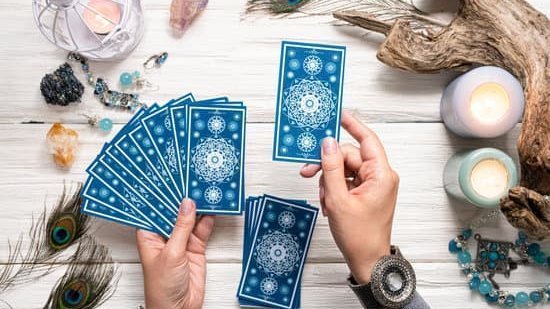
The Suit of Cups: Emotions and Relationships
The Suit of Cups in Tarot delves into emotions and relationships , exploring love , intuition , and deep connections. It urges you to trust your instincts and provides insights into matters of the heart. Embrace the water symbolism and uncover the mysteries of love with this intriguing suit.
Are you new to tarot cards and unsure about the divisions? In my article, we’ll delve into the basics. To get started, check out “Tarot Card Divisions for Beginners” for a helpful guide.
The Suit of Swords: Intellect and Conflict
The Suit of Swords in tarot symbolizes mental sharpness and confrontation . It prompts logical thinking and finding solutions in difficult situations. When these cards show up, they remind us to use our intellect to tackle problems and face conflicts with a clear and rational mindset.
By the way, if you’re interested in learning more about the different suits of tarot cards, check out our article on the topic “Suits of Tarot Cards” .
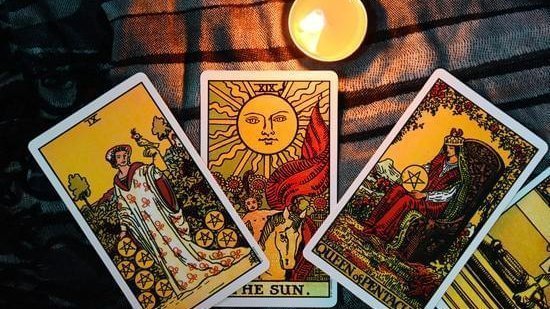
The Suit of Pentacles: Material Aspects and Career
The Suit of Pentacles in the world of tarot focuses on material aspects and career, representing the practical side of life. These cards offer insights into financial opportunities, investments, and material abundance, emphasizing the importance of stability and long-term financial security. Understanding their role in tarot readings can provide a deeper understanding of our relationship with material wealth and career pursuits.
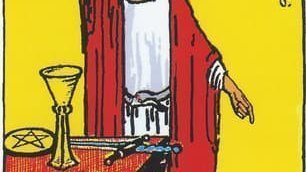
Understanding the Divisions of Tarot Cards
- The Major Arcana consists of 22 cards that represent major life lessons and spiritual guidance, such as The Fool’s journey through life, the themes of transformation, and important archetypes like The Magician and The High Priestess.
- The Minor Arcana is divided into four suits: Wands, Cups, Swords, and Pentacles. Each suit corresponds to different aspects of life, such as creativity, emotions, intellect, and material aspects.
- Numbered cards in the Minor Arcana represent different stages or levels of experience, while the Court Cards (Page, Knight, Queen, King) represent different personality types or aspects of ourselves.
- When combining the Major and Minor Arcana in readings, it’s important to interpret the cards in the context of the question or situation, and to pay attention to the relationships and interactions between the cards.
Numbered Cards and Court Cards
In the world of tarot , numbered and court cards play a crucial role in providing guidance and insights. Each card carries its own symbolism, representing different life stages and personalities. Understanding the significance of court cards in tarot readings allows for a more detailed interpretation, as they can represent real individuals or aspects of the querent’s personality .
Exploring the role of numerology in tarot card divisions reveals the mystical connection between numbers and universal energies. Embracing the symbolism of numbered and court cards, along with the insights offered by numerology, enriches the depth and meaning of a tarot reading, offering valuable guidance and illumination.
4/6 Combining Major and Minor Arcana in Readings

Mastering the Foundations of Tarot Card Divisions
- Start by familiarizing yourself with the Major Arcana and their meanings.
- Then, move on to understanding the Minor Arcana and the significance of the four suits.
- Explore the different themes and archetypes associated with the Major Arcana cards.
- Learn about the numbered cards and court cards in the Minor Arcana.
- Finally, practice combining the Major and Minor Arcana in readings to gain a holistic understanding of tarot card divisions.
Interpreting the Cards in Context
Interpreting tarot cards requires considering the context , the surrounding cards, and the querent’s question to gain a holistic understanding. The energy and atmosphere of the reading also play a significant role in interpreting the cards for meaningful guidance.
5/6 Conclusion: Integrating Tarot Card Divisions in Your Practice
Incorporating tarot card divisions and elemental symbolism into your practice can provide a deeper understanding and insight into your readings. By combining tarot cards, you can gain a more comprehensive analysis of their interconnectedness, bringing mindfulness and intuition to your practice. This integration can bring a new level of depth and significance to your readings as you continue to develop your tarot practice.
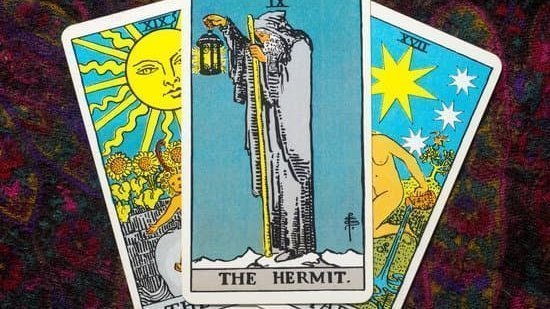
6/6 Conclusion
In conclusion, we have delved deep into the intricate world of tarot card divisions, from the symbolism of the Major Arcana to the nuanced meanings of the Minor Arcana. We have explored the journey of The Fool, the themes and archetypes , the four suits and their meanings, as well as the numbered and court cards. By combining the Major and Minor Arcana in readings, we have learned how to interpret the cards in context.
We hope that this article has provided valuable insights and guidance for integrating tarot card divisions into your practice. With a deeper understanding of tarot card divisions, we are better equipped to navigate the complexities of life and gain deeper insights into ourselves and the world around us. For more in-depth explorations and resources, we encourage further exploration of our other articles on related topics.
FAQ
How are Tarot cards divided?
Tarot cards are commonly divided into two main categories: the Major Arcana and the Minor Arcana. The Major Arcana cards usually symbolize important life events and spiritual teachings, while the Minor Arcana cards deal with the everyday experiences and challenges of life. Additionally, it’s worth mentioning that each category consists of 22 Major Arcana cards and 56 Minor Arcana cards, further contributing to the depth and diversity of readings.
What are the sections of Tarot cards?
A tarot deck consists of 78 cards and is divided into two main sections: the major arcana, which includes 22 cards focusing on significant life events and overarching themes such as relationships, career, and love, and the minor arcana, which consists of 56 cards. Additionally, the minor arcana cards often represent day-to-day events and experiences.
How do you split Tarot cards?
To paraphrase the text without plagiarizing, you can include additional details. First, divide the deck into two equal stacks and then shuffle them together. Hold each half of the deck in your hands and touch the top corners of each stack together. These corners are located on the short end of the cards. Finally, bring both stacks together again.
What are the three types of Tarot cards?
The three most widely used decks in esoteric tarot are the Tarot of Marseilles (a type of playing card deck), the Rider-Waite Tarot, and the Thoth Tarot. These decks are commonly used for divination and spiritual guidance. Each deck has its own unique symbolism and imagery, making them popular choices for tarot readers and enthusiasts.

